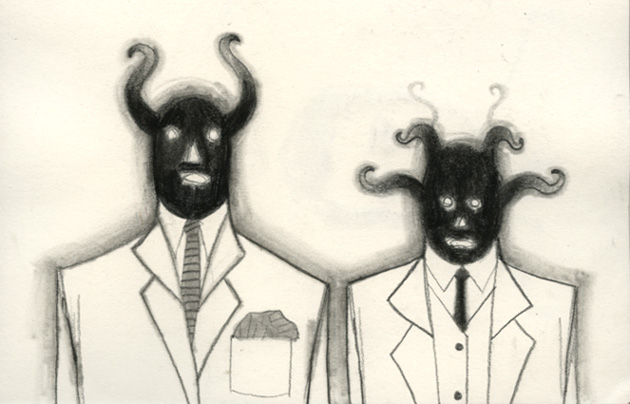A few weeks ago, my friend received an email with a list that had been making the rounds in the media industry post-Harvey Weinstein fallout. The crowd-sourced list, titled “Shitty Media Men,” named a bunch of men in my reporter friend’s industry who had allegedly sexually harassed and/or assaulted women at work.
While this list provoked executive level decisions at some of the companies where these men worked, with Vox Media firing its editorial director and BuzzFeed investigating allegations of sexual assault within the company, it’s difficult to decide what to do as an individual when faced with an anonymous, crowd-sourced list like this. The instinct to distrust unverified, anonymous sources comes at odds with the instinct — and “social requirement,” as my friend put it — to ostracize abusers and rapists.
So what can you do if you learn, through an unverified, anonymous source, that someone you know and may come into contact with is a harasser/abuser/rapist? Can — should — you do anything at all? Some friends of mine who’d been privy to this list and I sought to answer these questions. It really wasn’t easy.
“I think it’s important to name people, but it’s also important to pursue official channels of redress. Otherwise, I’m not sure how we can really act on it,” said one of my male media professional friends. “I know some of those people, and while I wouldn’t put it past them to have done something, I also don’t know that I can justify shunning them based solely on a list.”
The main obstacle to action my friend noted here was the “unverified source.” Especially as someone who works in media, an unverified source looked to him like a red flag. While an anonymous source can still be verified (look at most of the women publicly accusing Mark Halperin—formerly of NBC News until the company recently terminated his contract over multiple sexual harassment allegations), an unverified, anonymous source won’t pass muster in a reported news story. And it shouldn’t be the only source you use to condemn someone.
Of course, unverified anonymous lists have their advantages. They encourage more people to come forward, people who would otherwise keep traumatic experiences hidden. Not only can telling someone about such experiences be therapeutic, it can also help encourage others who’ve experienced abuse at the hands of that same individual feel more comfortable coming forward—maybe, this time, in a more public way.
But until that happens, what do you do with unverified accounts? My friends and I still hadn’t come to a conclusion, but we did wonder whether you could attempt to verify them if you were in the appropriate position.
“I’ve had a few conversations already with people who are afraid they’ll be accused of enabling this kind of behavior [sexual harassment] because they work with someone on that list but they’ve never experienced it firsthand,” my media friend pointed out.
If you work with someone who’s been named in this manner, you could start to pay closer attention to his behavior in the office. That won’t necessarily result in “verification.” Many who sexually harass at work make sure to do it in private, with only their victims as witnesses. Others who have been named may know they’ve been named, and may therefore temporarily abandon their criminal behavior until they feel they’re in the clear. Still, paying attention never hurts. It can help keep you and others around you safe.
Hanan, a female friend of mine who works in the film industry, which is “dominated by men, especially in leadership positions,” would definitely err on the side of safety if she came across a “Shitty Media Men” style list. “My immediate instinct would be to see to it that [men on such a list] would never be hired on our sets again, honestly, even before verifying…the claims.”
“If one of these men were specifically requested [to work on our set], I would have to discuss with my boss,” she continued. “Second, I would circulate the list with my friends within the industry, particularly the women. I would reach out to mutual contacts of the man in question and ask had they heard of either the allegations or stories of sexual harassment. If it was someone I knew well, I would confront them personally.”
Say you are friendly with a person who’s been named a sexual predator. Do you go up and ask them, point blank, if the reasons for them making it onto such a list are true? Or do you opt to believe in your friend over an anonymous source?
“I would at least talk to my friend about it,” another male friend of mine said. “Just reading something on the internet and then just dropping someone would also be a shitty thing to do.”
“But,” he added, “I feel like if someone made a list on the internet, you’ve probably witnessed or turned a blind eye to something.”
In the midst of the #MeToo campaign, a female friend of mine posted a powerful story on social media about her experience disclosing that she’d been abused by a male ex to other men in their mutual friend group. Her male friends, people who considered themselves “feminists” and otherwise behaved in ways most “woke” people would consider socially appropriate, reacted frankly horribly.
While their private reactions to my friend could have been deemed appropriate, even sensitive, at times, they continued to publicly act buddy-buddy with this known abuser. They’d acknowledge that intimate partner violence is a bad thing, but hey, it wasn’t happening to them, so it wasn’t their problem, was it? They could still be the abuser’s friends. He hadn’t done anything wrong to them.
Obviously this reaction is extremely problematic. It condones intimate partner violence and helps foster an atmosphere that protects abusers instead of the people they abuse. It’s scary to think that you could unwittingly be doing this by acting friendly towards a man who’s been accused by someone you don’t know, someone you can’t be sure even exists.
Personally, I’m inclined to believe allegations of sexual harassment and assault, even if a source is unverified and anonymous. To begin with, very few people falsely accuse others of these crimes and/or make false reports, whether that be to HR or law enforcement. Statistics generally put the frequency of false reports at as low as 2 percent of all rape reports.
Furthermore, as much as the likes of men’s rights groups would like you to believe otherwise, falsely coming forward is not worth the additional harassment survivors often face, the burdensome processes of proving an assault took place, the victim-blaming — the list of hardships goes on. Even an anonymous false accusation takes a certain effort and malice that I don’t believe most women are capable of, not when they know how much one false report can serve to jeopardize the millions of real reports out there, how it would provide ammo to the men’s rights groups who assert the false prevalence of women crying wolf.
Ultimately, while it may be morally difficult to use unverified, anonymous lists to individually condemn alleged sexual predators, we can all use these lists as warnings. Consider the Columbia University bathroom rapist list, which students created a few years back to warn other female students of rapists on campus who remained at large in spite of sometimes multiple reports made against them to the university. The point, said students activists who worked on the list, was to keep other students on campus safe.
So use such lists as warnings and calls to pay attention. And if you do ever witness questionable behavior from a person on such a list, you might feel more confident speaking up knowing that someone else has done so before you, however quiet that first voice may have been.
Image via Flickr/Eugene smith



